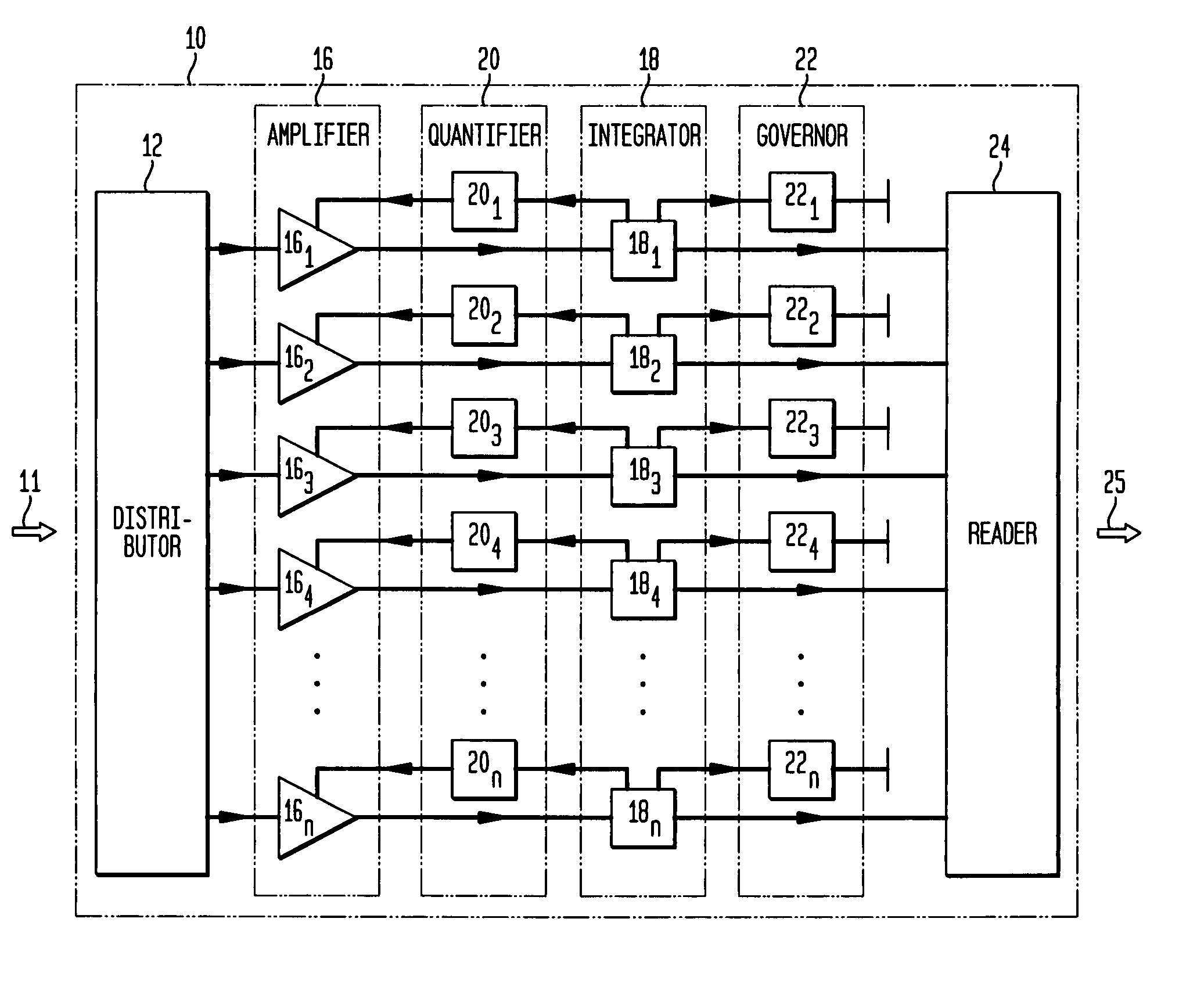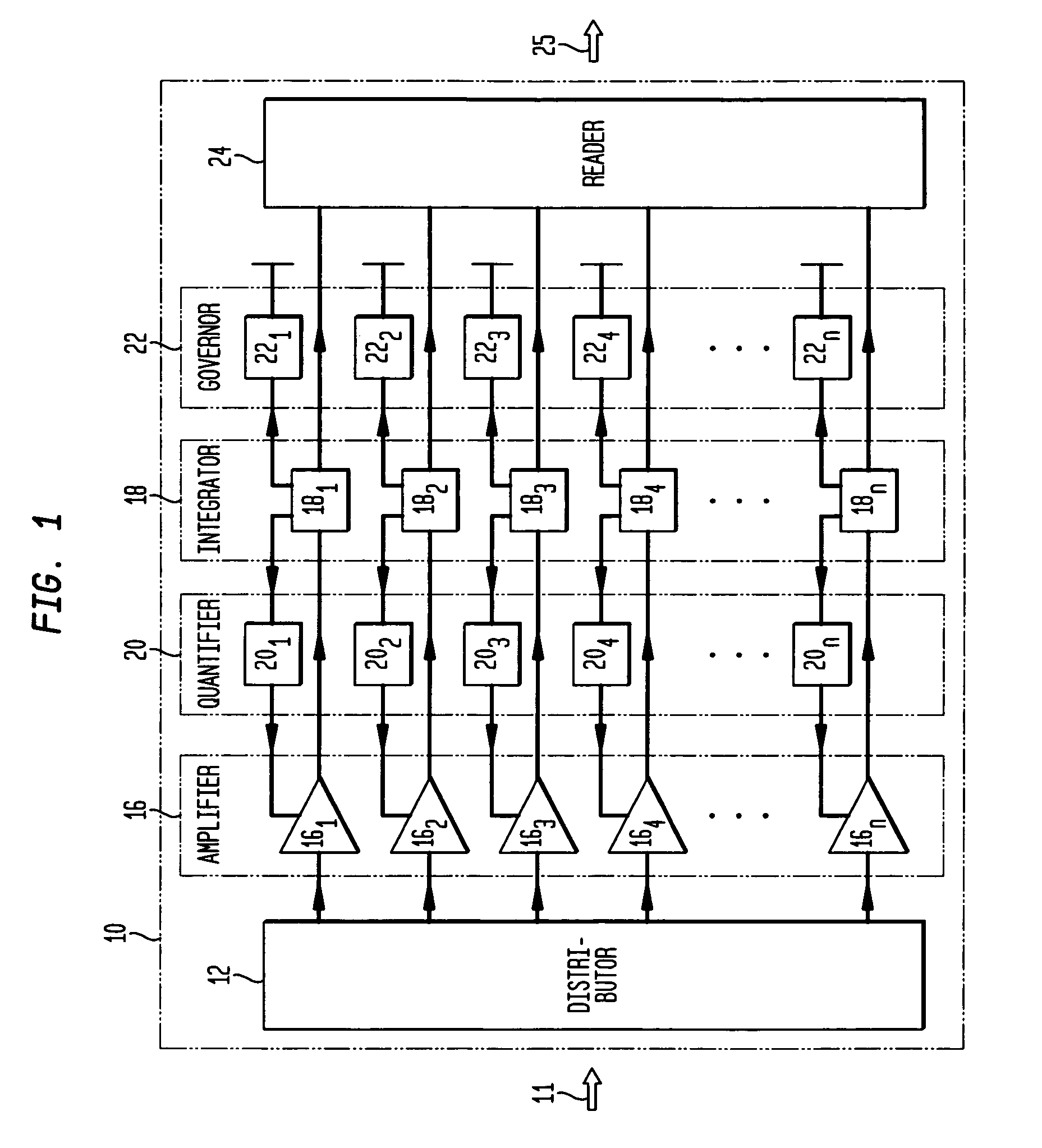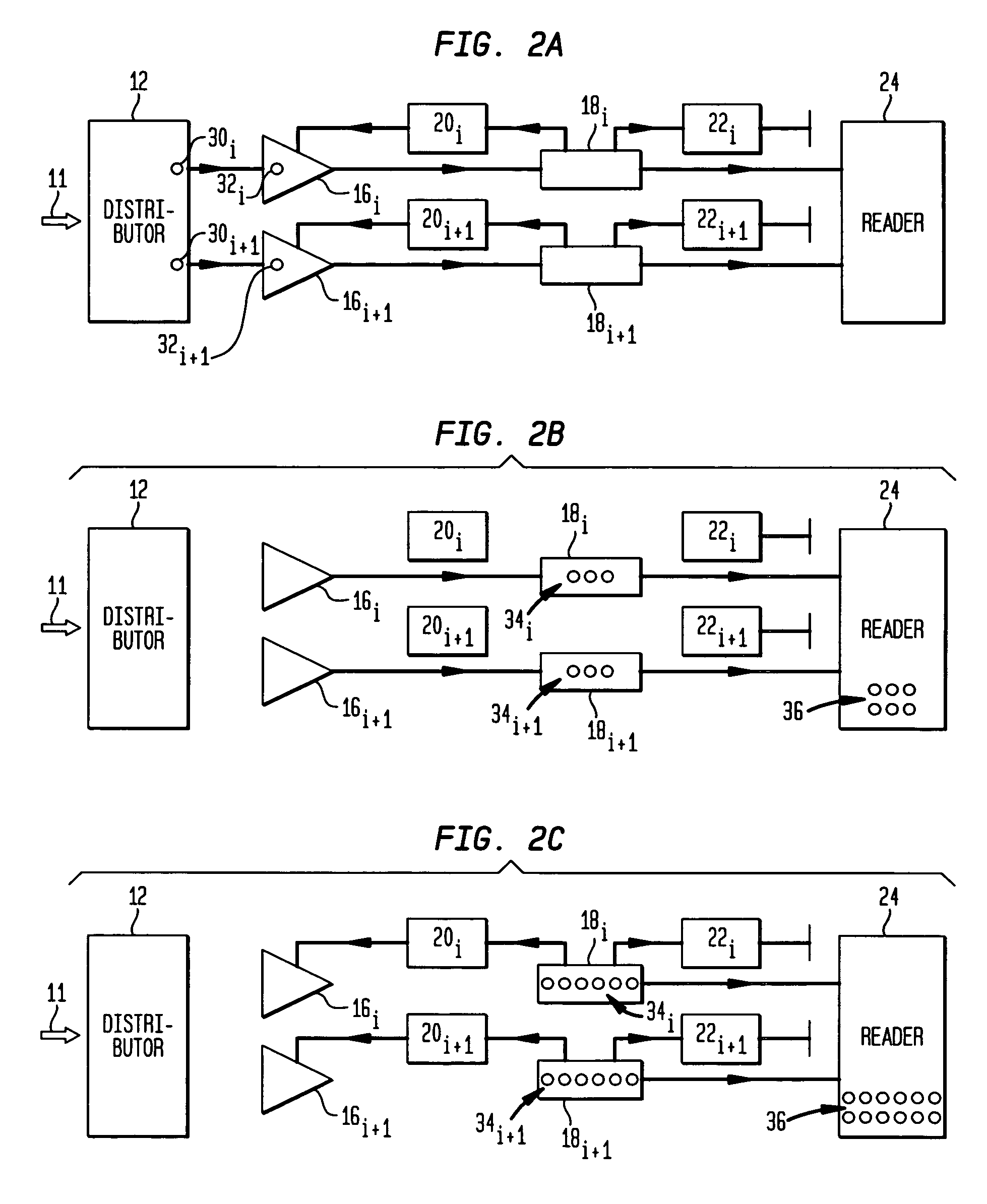High sensitivity, high resolution detection of signals
a signal detection and high-sensitivity technology, applied in the field of signal detection, can solve the problems of not solving the problem of recording signals consisting of several electrons, difficult to stabilize the avalanche amplification operating point, and presenting challenging and acute problems for the designers of modern sensors and transducers for myriad
- Summary
- Abstract
- Description
- Claims
- Application Information
AI Technical Summary
Benefits of technology
Problems solved by technology
Method used
Image
Examples
Embodiment Construction
[0030]FIG. 1 shows an illustrative functional block diagram of a discrete amplifier 10 in accordance with an embodiment of the present invention. As depicted, discrete amplifier 10 is a multichannel amplifier, with each channel (referenced by subscript i, i=1, 2, 3, 4 . . . n) comprising an amplifier 16i responsive to a quantifier 20i and coupled to an integrator 18i, which is coupled to quantifier 20i and to governor 22i. A distributor 12 is responsive to an input signal 11 and provides an output coupled to the input of each channel amplifier 16i. A reader 24 is coupled to each integrator 18 and provides an amplified output signal 25 representative of input signal 11. Thus, discrete amplifier 10 may be viewed as a multichannel amplifier having a distributor 12 coupled to an amplifier stage 16, which is responsive to a quantifier stage 20 and is coupled to an integrator stage 18, which in turn is coupled to quantifier stage 20, governor stage 22 and reader 24. As will be further und...
PUM
 Login to View More
Login to View More Abstract
Description
Claims
Application Information
 Login to View More
Login to View More - R&D
- Intellectual Property
- Life Sciences
- Materials
- Tech Scout
- Unparalleled Data Quality
- Higher Quality Content
- 60% Fewer Hallucinations
Browse by: Latest US Patents, China's latest patents, Technical Efficacy Thesaurus, Application Domain, Technology Topic, Popular Technical Reports.
© 2025 PatSnap. All rights reserved.Legal|Privacy policy|Modern Slavery Act Transparency Statement|Sitemap|About US| Contact US: help@patsnap.com



